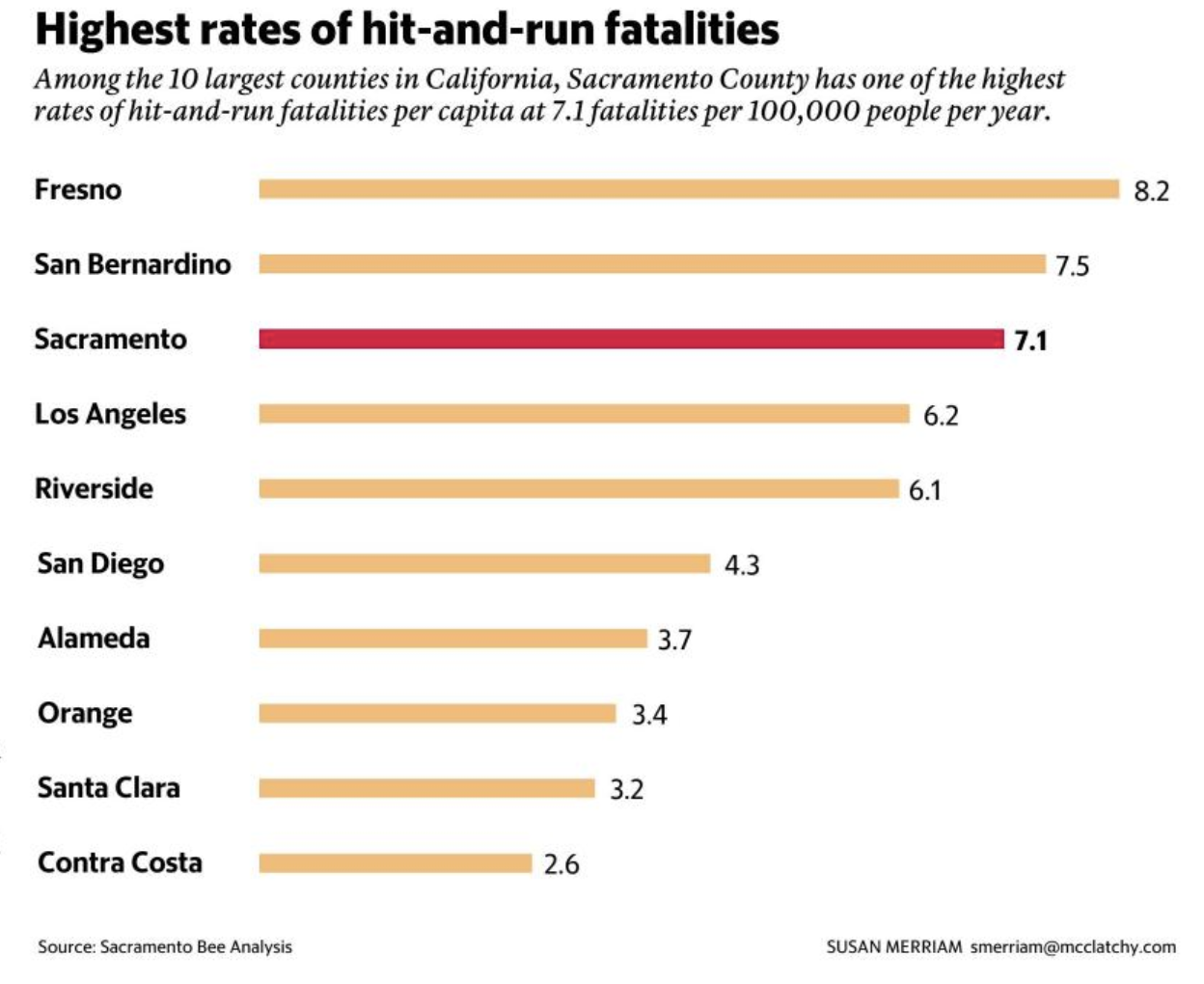Hit-and-run problem?
The Sacramento Bee published an article today about the high number of fatal hit-and-run accidents in Sacramento County (Ryan Lillis, "Hoping for JUSTICE that never comes", Sacramento Bee, June 18, 2023). The article says that, among the state's 10 largest counties, Sacramento County has the 3rd highest rate of hit-and-run fatalities per 100,000 residents. That's not good, obviously.

Then the article goes into some details that mostly focus on the poor design of streets and roadways within the county - like narrow sidewalks and inadequate bicycle facilities - and the way that the aged infrastructure is not compatible with traffic volumes and excessive speeding. Much of the discussion is about roadways that pass through areas where disadvantaged people live, people who rely on walking and biking to move to and fro. Examples are given of the problems in and around Florin Road and Highway 99 and along Stockton Blvd., with comments about how the City of Sacramento is concerned, blahblahblah.
Well, gosh, Sacramento Bee, in case you aren't aware, the South Sac problem area you focused on is in unincorporated Sacramento County, a part of the county many know as "The Finger" (hmm...wonder why?). And the article mentioned dangerous parts of Elk Grove Florin, Watt Avenue and Fair Oaks Blvd. as well as the El Camino and Fair Oaks Blvd. intersection, as though they are part of the City of Sacramento's road network, which they are not. For the most part, those roads are in unincorporated Sacramento County. The County bestowed its aged transportation infrastructure on the legacy portions of the cities of Elk Grove, Rancho Cordova and Citrus Heights and has impeded much of the problem-solving by those cities by insisting on decades-long, large alimony payments - a barrier for civic improvements that was imposed on the new cities because they dared to gain local control of their municipal taxes. As the municipal services provider for the unincorporated area, Sacramento County is also responsible for having created the aged and/or dangerous transportation infrastructure problem in the unincorporated area. The County is now - to its credit - struggling to deal with fixing it, a task that will take years and requires mega-millions.
Another factor the Bee article did not mention is the unincorporated area's inadequate enforcement of traffic laws. The state has made the California Highway Patrol responsible for enforcement of traffic laws in the entirety of the state's unincorporated territory, an enormous segment of the state that is home to some 5,000,000 people. The state has also failed to adequately fund the CHP so it can do that job. The CHP's priority list is long. Some of its taks are very big deals - freeway safety or the protection of the Capitol and our constitutional officers for example. Way down there on the list is dealing with unincorporated area speeders, stop sign runners and sideshow participants. Inadequate resources for traffic law enforcement is clearly part of the hit-and-run problem. And there are plenty of urbanized, unincorporated communites in the 10 biggest counties - over a 1,00,000 unincorporated area residents in L.A. County for instance. So, really, when you look at that graphic about hit-and-run dealths per 100,000, there could well be an important correlation with the existence of urbanized, unincorporated territory in the counties high on the list.
One would think an investigative journalism initiative would look into possible linkages between old infrastructure, inadequate enforcement resources and the perpetuation of lack of local control for unincorporated areas, particularly in counties like ours where the the unincorporated area is home to large numbers of disadvantaged residents. But that's not going to happen is it? Nothing to see here, people, please just move along
